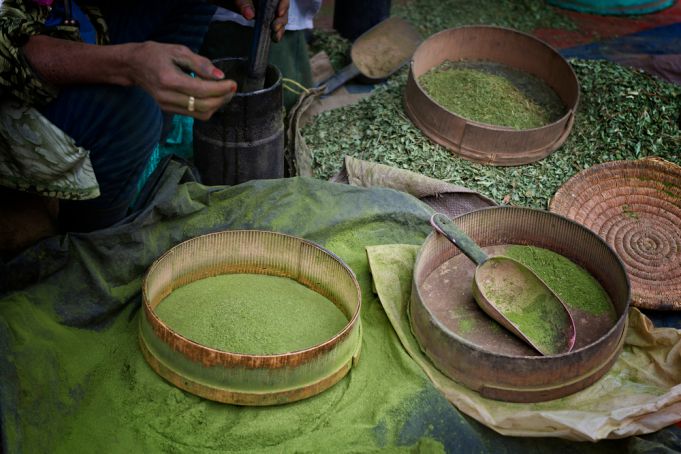Many visitors describe it as a temporary tattoo that fades away that easily sheds off when rubbed with olive oil, leaving you with memories of that sun-kissed holiday.
Morocco is a must-visit place for any traveler with a bias for destinations around the Mediterranean waters.
The chaos, frenzy, and exuberance of a population bustling with youth, observant to culture and welcoming to foreigners are synonymous with Moroccan urban centers.
Have you already gone shopping at the souk in Marrakech or a hiking trip to Imlil on the heart of the Atlas mountains?
What makes North Africa memorable to all visitors is much more than the sights but rather the time spent, new people met, experiences shared and a lot more. One outstanding activity is a Henna art session, widely cherished by women who pick a design pattern that best describes their personalities.
Natural ingredients
The red hue arising from the Henna plants comes from the leaves. The only way to transfer the dye to any surface is by breaking the leaves. Start by grinding the leaves into a fine powder, then mix with an adequate amount of water until it turns into a paste. That is the paste applied onto your skin.
Sensational events
Henna dye is a popular form of decoration in several countries - Morocco included. It’s widely used in India, Saudi Arabia, Egypt, Pashto-Arabic cultures. According to regional customs dating to the early years of the Berber community, henna is a staple in the cosmetics industry. A tradition that sealed its role during birthdays, weddings, beauty treatments, victory, and medicinal use. When in a session, converse with the artist, and drift accordingly if the person is the storyteller type. You will understand a thing or two about Moroccan people and culture. Their past encounters with hundreds if not thousands of tourists throughout their lives is a treasure trove of information.
Color patterns
Henna creates a reddish-brown hue that is applied to the hair, skin, and clothing fabrics. In Morocco henna is vital when coating wool and leather products. Some places offer a black form of henna which is not an authentic product. To avoid having something that might irritate your skin, stick to the standard product. The sight of traditional Moroccan attire preferably takchitas or kaftans with neatly drawn Berber designs on the arm and feet of the wearer is excellent.






























